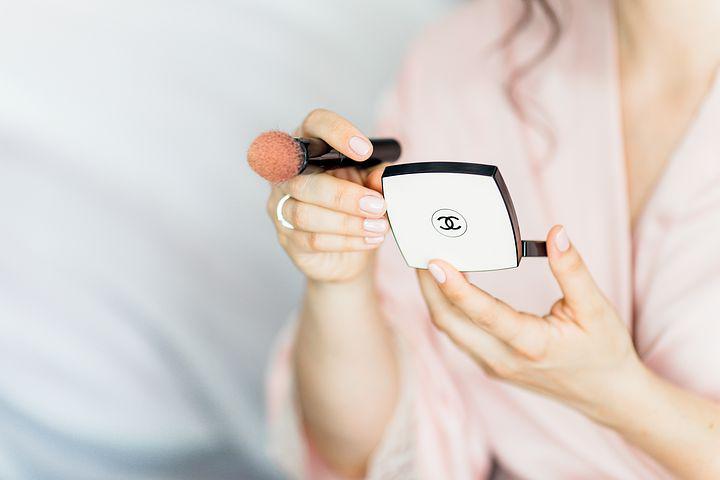1. By Foundation sponge, brush, hands…. which should you use?
I absolutely adore foundation, and I know you do too. But, deciding how to apply it is a little confusing. Should we use a sponge or a brush, or why bother with any tool? Why not just use our hands?
While there is no right or wrong way to use it, each technique has unique advantages and disadvantages. So let’s check out the overview of each approach and see what will be best for you.
Let’s start with sponges and beauty blenders. Sponges come in various forms and textures, from teardrops to a slew of beauty blenders. Many people are fans while others are not.
I use a blender from Beauty Blender, my go-to for quite some time.
With sponges and blenders, you can achieve a natural, skin-like appearance without being too heavy. You can also dampen the sponge to create a more natural appearance with a full-coverage foundation.
This makes sponges ideal for a glossy, radiant glow. Using a sponge, you can also remove some of the excess makeup if you apply too much and it appears cakey. And the coolest part about sponges is how inexpensive they are.
But, there are some things I don’t like about sponges. First, they absorb a lot of products. Sponges will eat through your foundation quickly; they are sponges. Plus, you have to replace them often, making them less sustainable and harmful to the environment.
Many make-up artists employ at least one (often several) foundation brushes. They offer various options for different purposes. Foundation brushes come in many varieties and textures, but a flat-top Kabuki brush is a must for the most effective coverage. To create a realistic airbrushed effect, you can also use a soft fluffy brush in circular strokes. I use a flat-top make-up brush from Real Techniques for my day-to-day use.
The major upside of using a foundation brush is that it produces more effective results. They provide excellent coverage, are clean, and you can layer them easily, allowing you superior control over coverage.
The major issue with foundation brushes is that they don’t move like a sponge or finger, and if not properly stored, the bristles might flex and snap. Additionally, they are really expensive. And you can not cheap out on them as poorly built brushes might create smears and leave stray hairs on the face.
How about we ditch the tools… and use our hands?
Many people rely on their hands while applying foundation, while others can’t even think about it!
I love that they are free, and apart from sanitizing them beforehand, I don’t need to clean them every week, like brushes and sponges. Also, your fingertips can soften up the foundation, making it easier to integrate into your face.
However, you don’t have the same level of precision as you would with a blender or a foundation brush. As a result, it can lead to streaking or inconsistent coating. Moreover, it isn’t easy to manage how much foundation you apply, resulting in a thick or cakey finish.
I often apply foundation with a brush and then dab it with a blender to remove the extra foundation to get a uniform and natural appearance. However, there is no good or wrong method. Select what works best for you. Try them all and then decide. I learned through trial and error, and it can help you too.
